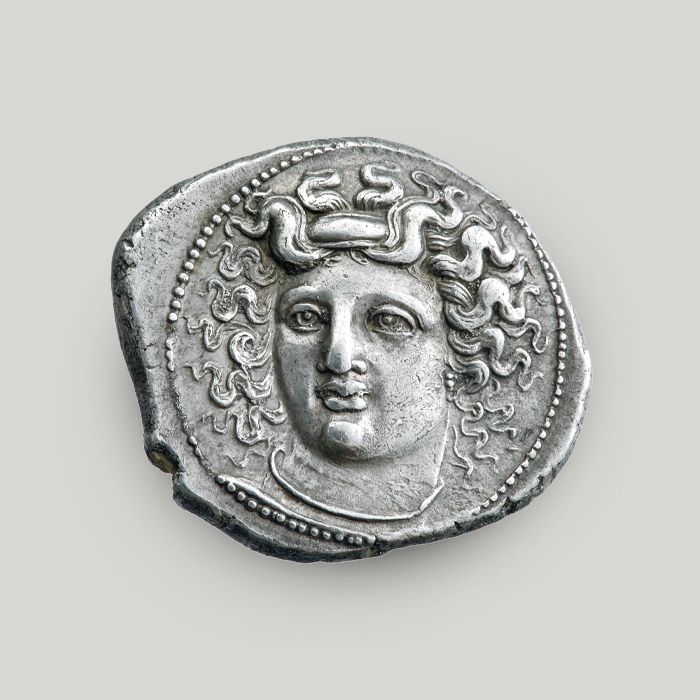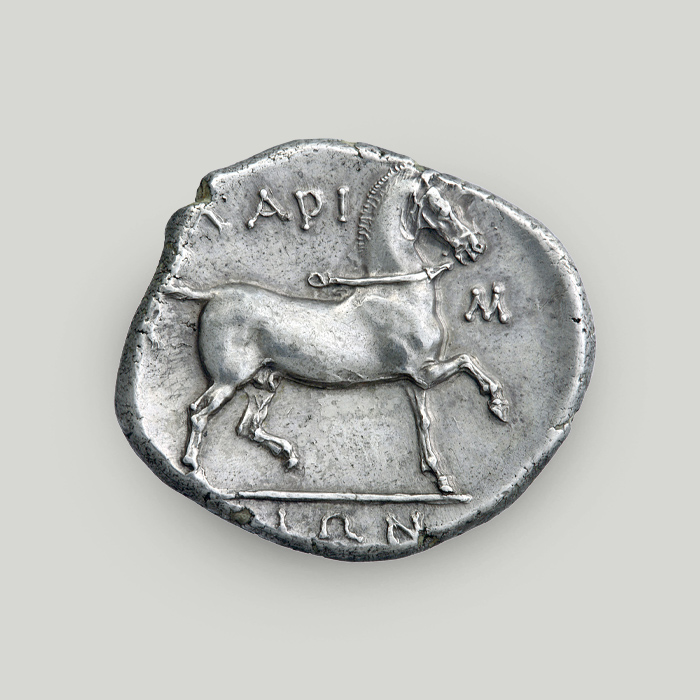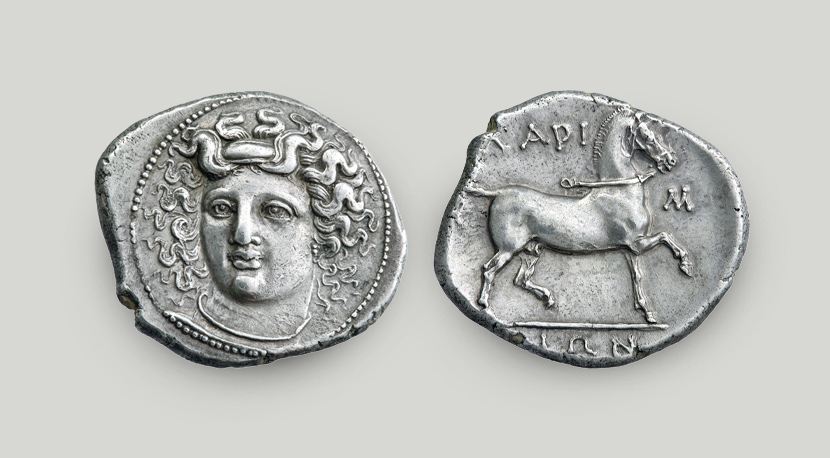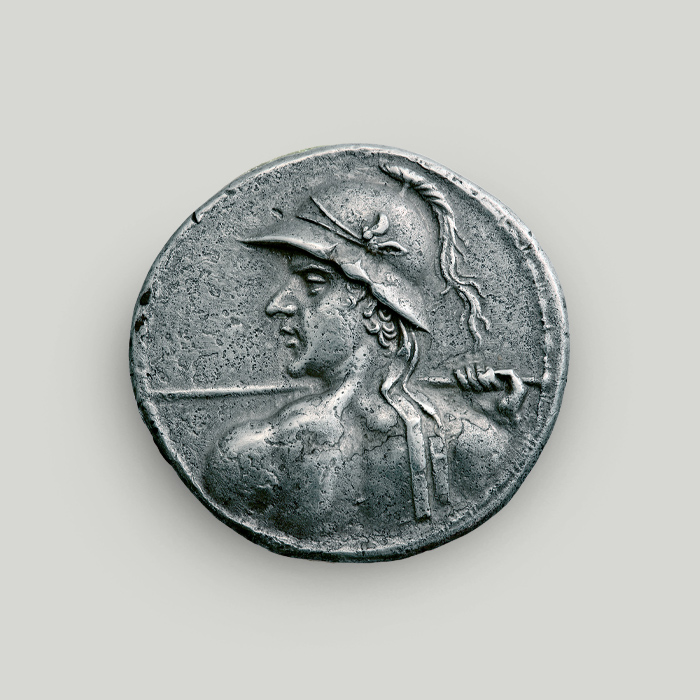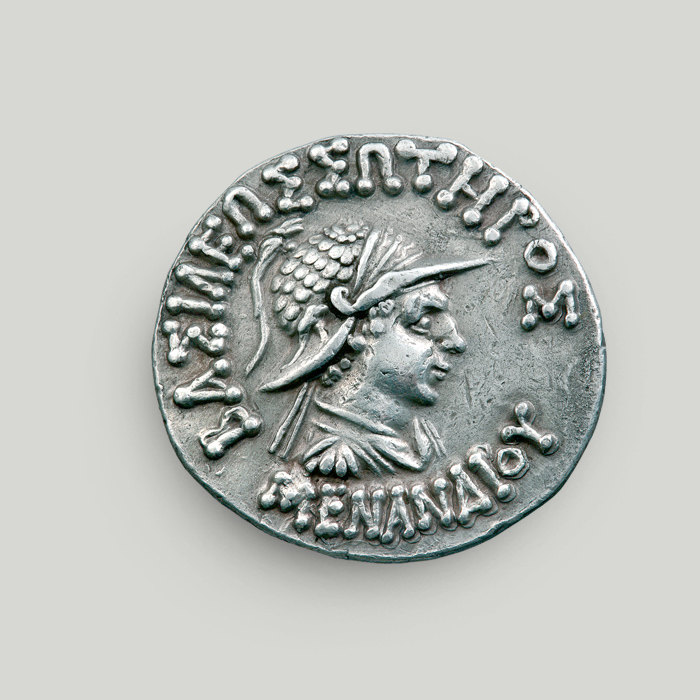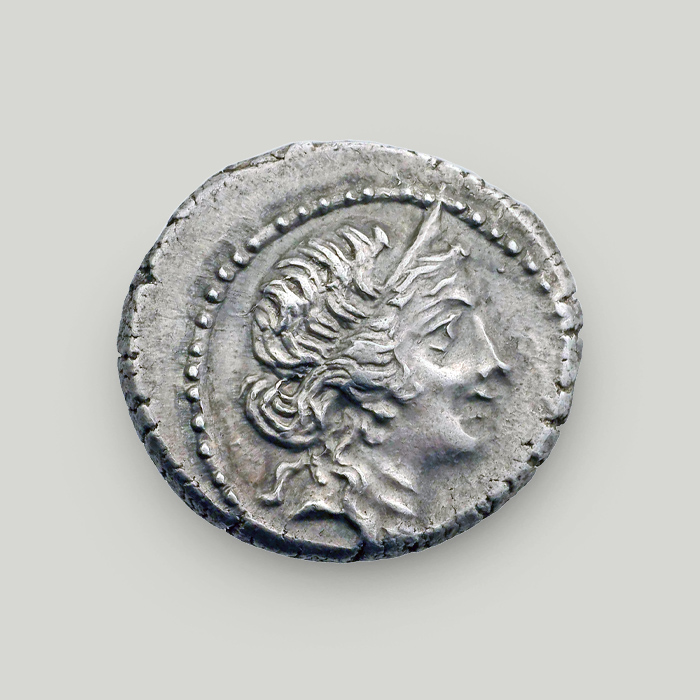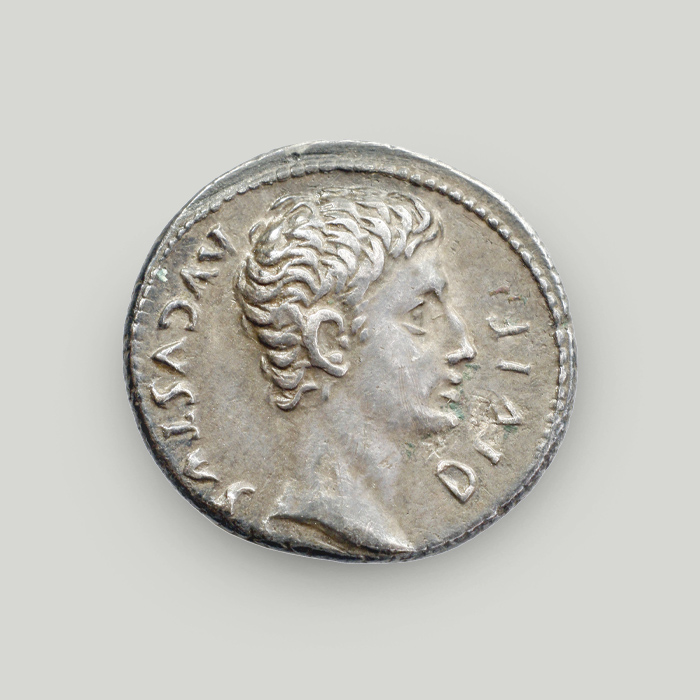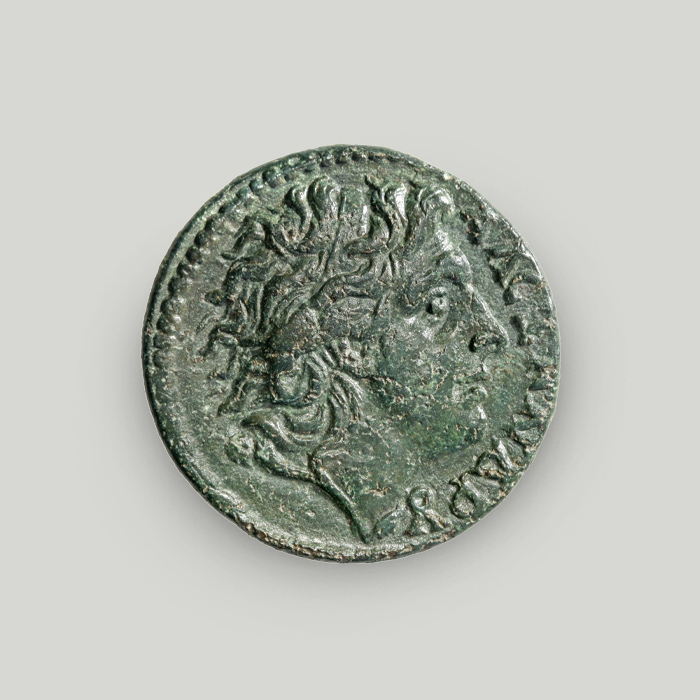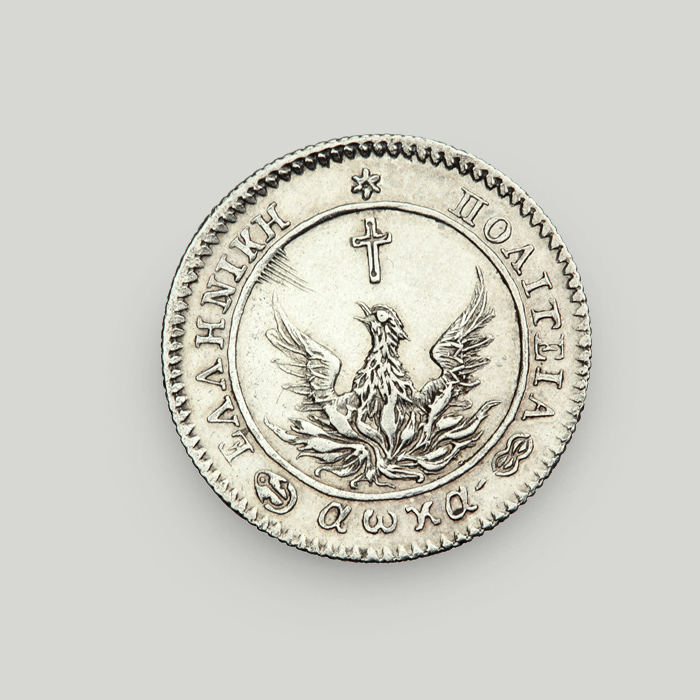Silver didrachm, Larissa
The silver didrachm of Larissa, Greece, is a masterpiece of Ancient Greek numismatic art. The reverse boasts a unique figure of a horse prancing. This is the finest depiction of a horse on an ancient coin. Larissa was the wealthiest city in Thessaly and also had the largest mint in the region.
Obverse
Head of the nymph Larissa with headband in her hair. Her face is in 3/4 profile facing left, within a circular dotted border.
Reverse
Horse prancing. The typical animal of Thessaly is at the centre of the flan, with the legend reading ΛΑΡΙΣ[Α]ΙΩΝ (of the Larisseans). The letter “A” is illegible due to damage.
The ancient city of Larissa
In antiquity, the city of Larissa saw significant growth. However, historical research into its past is not easy, as the ancient city is buried under the modern-day one.
Its name derives from the Pelasgian word for fortress. According to myth, however, it got the name from its founder Larissos. He was the son of Pelasgus and founded the city about 4,000 years ago.
Another version has the city named after the nymph of the same name, also depicted on local coinage.
The powerful city of Thessaly
Thessaly was one of the most important regions in the Greek world and the great powers of the time set their sights on it early on.
From the late 7th century BCE, Larissa prevailed in the fertile Thessalian plain and achieved considerable prosperity.
As a regional power, it had a key role in the troubled history of Thessaly. Despite the city’s power and growth, it was long before it issued its own coins.
The first coins
Larissa was the most economically developed city, with the most important mint in the region. The first coins minted there date to the 5th century BCE.
Issued during the 4th century BCE, silver didrachms mark the peak of local numismatic art. Both sides of the coin provide valuable information on the city’s mythology and the history of the region.
This coin is counted among the masterpieces of Ancient Greek numismatic art.
The nymph Larissa
The obverse depicts the nymph Larissa. According to myth, she lived on the banks of the Peneus River and the city was named after her.
Nymphs were minor female deities. They were personifications of the rivers and springs where they lived and were tied to those landforms.
As personifications of water, they reflected the paramount importance of the element for the existence of life, as water alone stands between lush vegetation and barren land. This is also why nymphs were the mythical nurses of divine infants and heroes.
They were also thought to possess divining and healing powers as a result of their association with Apollo.
These ancient deities have survived in Greek folk tradition, too. Folklore has it that fairies still live in the woods, close to springs or inside caves.
The land of horses
The reverse of the didrachm is a hymn to Thessaly as a horse-breeding region. It was famous for its horses already in antiquity. Ancient authors often praise the formidable Thessalian cavalry, which played a key part in many historical events.
While Xerxes marched to Attica in 480 BCE, he organised a horse-race in Thessaly. This is when he realised how superior the Thessalian cavalry was. He called it “the first and best in Greece.”
When Philip II of Macedon wanted a horse for his son Alexander (later Alexander the Great), he looked no further than the Thessalian plain to find the legendary Bucephalus. Later, a division of Thessalian cavalry followed Alexander in his campaign into the vast Persian empire.
Even Pythia, the oracle and high priestess at Delphi, was said to have called Thessalian horses the finest in one of her prophecies.
The horse on Thessalian coinage
Local mint engravers found inspiration in the rich horse-breeding tradition of the land. Horses became quite standard in Thessalian coin types.
Thessalian mints have given us the finest and most impressive depictions of the animal in numismatic art.
This coin from Larissa is the most typical example. The silver didrachm of Larissa depicts a Thessalian horse prancing.
Fractions and etymology
As suggested by its name, the didrachm equalled 2 drachmas. Each drachma equalled 6 obols.
Before the invention of coins, people used iron spits of 1-1.5 meters in length for their daily transactions.
The spits was called ovelos, and 6 of them were considered a standard handful. This handful was later dubbed “drachma”, as it could be grasped (drattomai in Ancient Greek) in a person’s fist.
When coins started to circulate, the word ovelos (the previously used spit) changed to ovolos (“obol” in modern numismatics) and was used to denote the value once held by 1 spit, i.e. 1/6 of a drachma.
The Alpha Bank Numismatic Collection is not open to the public.
Research visits to the Numismatic Collection can be organised upon request.
Contact us to book your visit.
